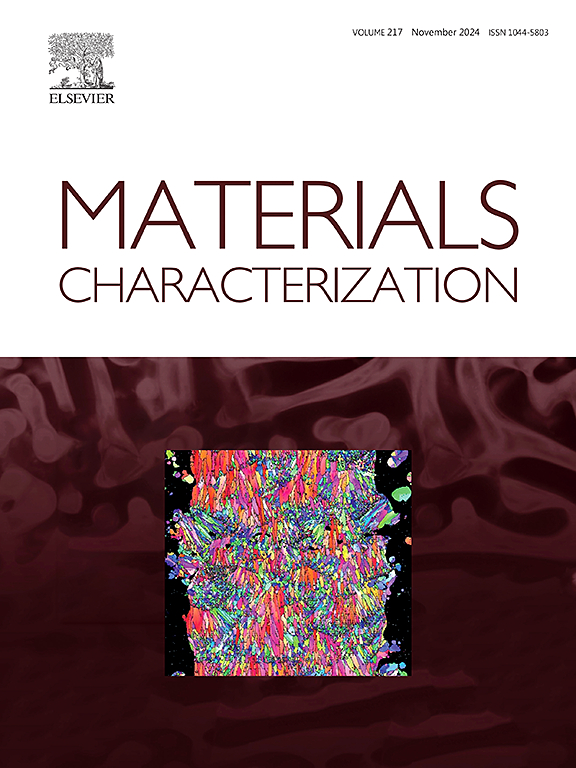Morphological and crystallographic features of Laves phase in advanced 9 % Cr creep-resistant steel
IF 4.8
2区 材料科学
Q1 MATERIALS SCIENCE, CHARACTERIZATION & TESTING
引用次数: 0
Abstract
The precipitation behavior of the Laves phase in a 9 % Cr martensitic steel during creep at 650 °C was investigated by means of transmission electron microscopy (TEM). The ideal stacking sequence of the Laves phase is interrupted by various defects, including basal, prismatic, and pyramidal planar faults. The high density of coexisting planar defects significantly affects the crystal structure of the C14 Laves phase, leading to the appearance of a five-fold symmetry structure with characteristics of quasicrystalline ordering. The preferred nucleation sites for the Laves phase particles were determined to be the ferrite (α) grain boundaries and the α/M23C6 (M = Cr, Fe) interphase boundaries. Selected area electron diffraction and high-resolution TEM of extracted carbon replicas were employed to reveal the orientation relationships between the phases. In the case of interfacial precipitation, the lattice mismatch between the Laves phase and the α-matrix is discussed with respect to the adoption of two distinct orientation relationships with M23C6 carbide: namely, , , and , , taking into account that M23C6 particles are commonly related to the α-matrix by the Kurdjumov-Sachs orientation relationship. These observations and their interpretations are essential for understanding the heterogeneous precipitation of Laves phase particles in high‑chromium martensitic steels.

求助全文
约1分钟内获得全文
求助全文
来源期刊

Materials Characterization
工程技术-材料科学:表征与测试
CiteScore
7.60
自引率
8.50%
发文量
746
审稿时长
36 days
期刊介绍:
Materials Characterization features original articles and state-of-the-art reviews on theoretical and practical aspects of the structure and behaviour of materials.
The Journal focuses on all characterization techniques, including all forms of microscopy (light, electron, acoustic, etc.,) and analysis (especially microanalysis and surface analytical techniques). Developments in both this wide range of techniques and their application to the quantification of the microstructure of materials are essential facets of the Journal.
The Journal provides the Materials Scientist/Engineer with up-to-date information on many types of materials with an underlying theme of explaining the behavior of materials using novel approaches. Materials covered by the journal include:
Metals & Alloys
Ceramics
Nanomaterials
Biomedical materials
Optical materials
Composites
Natural Materials.
 求助内容:
求助内容: 应助结果提醒方式:
应助结果提醒方式:


